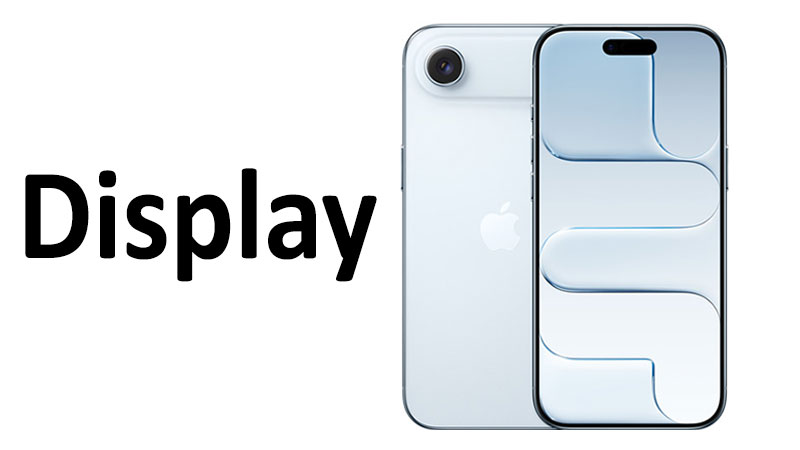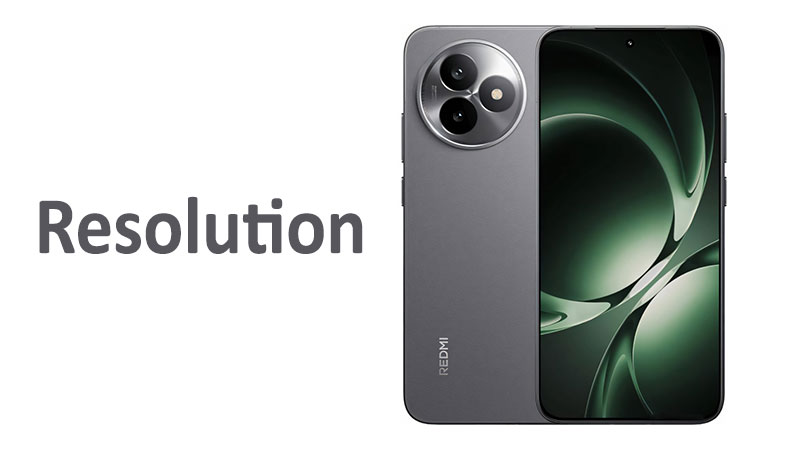The display on a smartphone is its most important feature. It is the window to your digital world. It is also the primary way you interact with the device. Apple has a history of pushing display technology forward. With the new iPhone Air, they have once again raised the bar. The Apple iPhone Air display is a marvel of modern engineering. It sets a new standard for brightness, clarity, and durability. This comprehensive review will explore its key features, compare it to other displays, and analyze what it means for consumers.
The Next-Generation LTPO Super Retina XDR OLED
The iPhone Air features a cutting-edge LTPO Super Retina XDR OLED screen. This technology is a significant advancement. It combines several innovations into one panel. The “LTPO” stands for Low-Temperature Polycrystalline Oxide. This is a special backplane technology. It allows the display to be incredibly power-efficient. This is crucial for a phone as thin as the iPhone Air. It helps extend battery life, even with an advanced display.
The “Super Retina XDR” part is Apple’s branding. It signifies a high-quality OLED screen. This display offers stunning contrast and vibrant colors. It also supports High Dynamic Range (HDR) content. The “120Hz” refresh rate is another key feature. This ProMotion technology makes everything feel smoother. Scrolling through a website is fluid. Gaming is more responsive. It adjusts the refresh rate dynamically. It can drop to 1Hz when the phone is idle. This saves a lot of power.
A New Level of Brightness
One of the most impressive specs is the brightness. The Apple iPhone Air display reaches incredible levels. It has a typical brightness of 1000 nits. This is excellent for everyday use. For HDR content, it can hit 1600 nits. This makes movies and photos look incredibly vivid. The peak brightness is a jaw-dropping 3000 nits. This is specifically for High Brightness Mode (HBM). It activates in direct sunlight. This ensures perfect outdoor readability. You will never struggle to see your screen again. This is a major improvement over previous iPhone models. Competitors like Samsung and Google also offer bright displays. However, the iPhone Air’s peak brightness is an industry leader.
Unprecedented Durability: Ceramic Shield 2
Durability is a major concern for many users. Apple addresses this with Ceramic Shield 2. This is the latest version of their protective glass. It is a glass-ceramic material. It is infused with nano-ceramic crystals. These crystals make the glass much tougher. The iPhone Air’s display has a Mohs hardness level of 5. This means it resists scratches from keys and coins. It is also much more resistant to cracking. Apple claims it is three times more scratch-resistant. This offers significant peace of mind. Other phones use Gorilla Glass or similar protections. However, Apple’s Ceramic Shield 2 is a custom solution. It is designed to be both tough and clear. This makes it a standout feature.
Detailed Specs and Analysis
Let’s break down the technical specifications. The display has a resolution of 1260 x 2736 pixels. It has a 19.5:9 aspect ratio. The pixel density is approximately 460 ppi. This is a very high number. It means the screen is incredibly sharp. Text is crisp and clear. Images show fine details without any pixelation. This is a perfect balance of resolution and power efficiency. A higher resolution would drain the battery faster. This combination provides a beautiful and efficient viewing experience.
Pros and Cons of the iPhone Air Display
Like any technology, the iPhone Air’s display has its strengths and weaknesses.
Pros:
- Stunning Brightness: The 3000 nits peak brightness is exceptional. It ensures great visibility in any condition.
- Incredibly Smooth: The 120Hz ProMotion technology provides a fluid user experience. It makes everything feel fast and responsive.
- Excellent Efficiency: LTPO technology dynamically adjusts the refresh rate. This helps to extend battery life.
- Enhanced Durability: Ceramic Shield 2 offers industry-leading scratch and crack resistance. It provides peace of mind.
- Vibrant Colors: Super Retina XDR delivers perfect blacks and rich, accurate colors. This is ideal for media consumption.
Cons:
- High Cost: Advanced display technology comes with a premium price tag. The iPhone Air is an expensive phone.
- Potential for Burn-in: As with all OLED screens, there is a small risk of screen burn-in. This is especially true with static images. However, modern OLEDs have greatly reduced this risk.
- Limited Customization: Apple’s display settings are generally simple. They lack the in-depth customization found on some Android phones.
Key Points for the Consumer
When you consider buying the iPhone Air, the display is a huge factor. Here are some key takeaways.
- For photographers and videographers: The HDR capabilities and color accuracy are a game-changer. Your photos will look exactly as you captured them. Videos will pop with incredible detail.
- For gamers: The 120Hz refresh rate is a massive benefit. It reduces motion blur and makes fast-paced games more immersive. It can also give you a competitive edge.
- For everyday users: The brightness is the most noticeable improvement. Reading an email in direct sunlight is now effortless. The durability is also a huge selling point. You can worry less about accidental drops.
- For media consumers: Watching movies and TV shows on this screen is a joy. The high resolution and perfect blacks make for a cinematic experience. Dolby Vision support adds another layer of quality.
Specialized Comparisons
Let’s compare the iPhone Air’s display to some key devices.
vs. iPhone 15 Pro Max
The iPhone 15 Pro Max had a fantastic display. It also had a ProMotion 120Hz OLED screen. However, the iPhone Air makes two major improvements. The first is brightness. The iPhone Air’s 3000 nits peak brightness is a significant jump. The iPhone 15 Pro Max peaked at around 2000 nits. The second improvement is durability. The iPhone Air features the new Ceramic Shield 2. This is more scratch-resistant than the previous generation.
vs. Samsung Galaxy S25 Ultra
Samsung is a leader in display technology. The Galaxy S25 Ultra has a stunning Dynamic AMOLED 2X display. It offers fantastic brightness and refresh rates. However, the iPhone Air’s peak brightness is higher. This gives it an edge in outdoor visibility. Both phones offer excellent color accuracy. Samsung’s display often has more vibrant, saturated colors. Apple’s is tuned for more natural, true-to-life tones. This is a matter of personal preference.
vs. Google Pixel 9 Pro
Google’s Pixel displays are known for their clarity. The Pixel 9 Pro has a beautiful OLED screen. It also supports high refresh rates. However, it does not match the iPhone Air’s peak brightness. The iPhone Air is a better choice for someone who spends a lot of time outdoors. The iPhone’s Ceramic Shield 2 is also a more robust protection. This makes it a more durable option overall.
Conclusion
The Apple iPhone Air display is a huge leap forward. It combines top-tier technology into a single package. The LTPO Super Retina XDR OLED screen is stunning. Its 120Hz ProMotion technology ensures a silky-smooth experience. The HDR and Dolby Vision support make media pop. The 3000 nits peak brightness is a record-setter. It makes the phone usable in all lighting conditions. Ceramic Shield 2 provides excellent protection. It makes the screen resistant to scratches and cracks. While the phone is expensive, the display justifies the cost. It is a key selling point for the iPhone Air. For anyone who values a premium visual experience, this display is a must-have. It is simply the best in its class.
FAQ
What is LTPO technology?
LTPO stands for Low-Temperature Polycrystalline Oxide. This technology allows a display to dynamically change its refresh rate. It can go from a high 120Hz down to a low 1Hz. This saves a lot of battery power.
How bright is the iPhone Air display?
The iPhone Air display can reach 3000 nits of peak brightness. This is the highest level ever on an iPhone. It ensures great visibility, even in direct sunlight.
Is the iPhone Air display protected from scratches?
Yes, the display is protected by Ceramic Shield 2. This is Apple’s latest durable glass. It has a Mohs hardness level of 5. This makes it highly resistant to scratches.
What is the difference between Super Retina XDR and other OLED displays?
Super Retina XDR is Apple’s marketing term. This refers to a high-quality OLED screen that supports HDR, delivers a high contrast ratio, and offers excellent color accuracy. Overall, it’s considered a premium display.
Does the iPhone Air have an Always-On display?
Yes, the iPhone Air features an Always-On display. Thanks to the efficient LTPO technology, it can refresh at just 1Hz. This shows the time and widgets without draining the battery.



